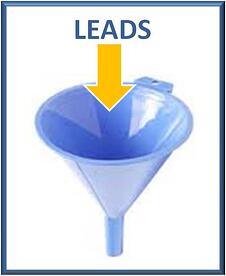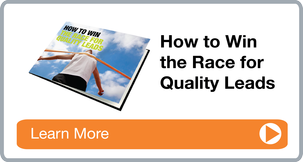Lead generation is at the forefront of the marketing and sales world. Increasing traffic, attracting potential buyers and engaging with them has been continually emphasised in the context of inbound marketing - bringing the buyer to you. Lead generation is the next step, after grabbing the attention of your market. Here are 5 lead conversion strategies that can strengthen and help maximise business growth.

1. Defining your Buyer Persona
Defining and understanding your buyer persona is the first step you need to take in order to be able to convert leads into buyers, a vital part of the buyers journey. There is no point in creating an expensive marketing campaign aimed at someone that doesn’t want to buy what you are selling.
It is crucial to liaise with your sales and marketing team to define who is going to be interested and willing to spend money on your product. From here you can create a focused marketing strategy that will attract these types of people, providing your sales team the opportunity to segment leads into sales-ready customers, not-yet-sales-ready-customers, competitors and researchers.
Having a clear understanding of who your buyer personas are will make it easier to convert and sell once leads reach the bottom of the funnel, and prevent losing leads at an earlier stage.
2. Content, Content, Content
It is essential to provide concise, quality content your buyers want to read. It is not sufficient to create heaps of content to populate your blog. To make content work for you and drive potential buyers down the marketing funnel the content you create must be engaging, educational and interesting. The goal of your content is to help consumers on their buying journey, and in turn, become a lead that will come back because they value the information you provide to them. Using a CTA assists leads that are happy with the high quality information and are willing to take the next step, and consider your solution to their problem.
3. Being Social
Keep connected! This is linked to high-quality content creation. Use your social platforms such as Twitter, Linkedin and Facebook to keep the conversation going once you have captured the attention and converted potential buyers into leads. It is essential to keep a dialogue going until your lead is at the decision stage of the buyer’s journey and can be converted into customers. Each lead is different and it takes some leads longer than others to be ready to convert, thus it is important to nurture your leads and give them exactly what they need. In achieving an exciting online presence which can be used to network and engage with a range of important people from potential clients to the media you can become more established and increase your social proof. This will ultimately make you more credible, set you apart from the competition and help to convert leads quicker.
4. Pay Per Click Advertising
Pay Per Click advertising drives a large conversion rate. PPC ads on search engines such as Google operate through a keyword-bidding model. This means you can target potential customers searching for the solution you are selling. In comparison to organic searches, those who click on your ad are at a different stage of the decision process than potential customers that are just browsing the web for information. These consumers are ready to purchase, and can be easily converted. Essentially PPC allows for sales-ready leads to come directly too you with less effort than would be needed for this to occur organically.
5. Testing, Tracking and Analysing
As a marketer you want to be flexible in your approach. To achieve this, analysis of your campaign needs to be a top priority within your weekly tasks. Testing, such as A and B e-mail campaigns in which you can determine which subject line has a higher opening rate, tracking and analysing your customers behaviour on your site are key. Google Analytics, for example, can be really helpful here. Never get too comfortable with your campaign, to be successful you should strive to adjust, improve and move forward. Never be afraid to try a few things before you get it right. Marketing is an ongoing process, which needs to be flexible and adaptable. Testing activities such as, playing with the subject line of an e-mail to determine which has a higher opening rate, tracking and analysing consumer behaviour on your website is essential. A useful tool for this may be Google Analytics. Successful campaigns should be continually reviewed, and where necessary adapted and improved upon. These five points will help you get ahead of the competition. You can sell more, close faster, and generate more high-quality leads with a greater conversion rate.
To learn more about quality lead generation, download our free e-book

